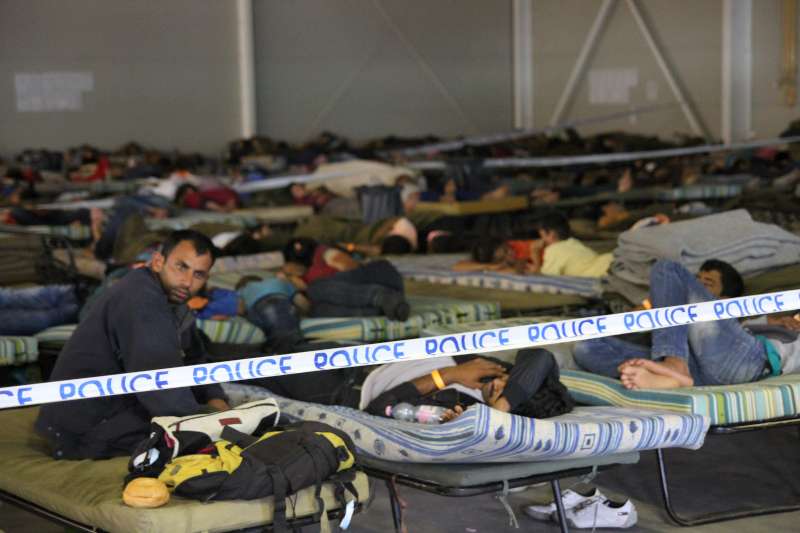When the United States as part of the P5+1 negotiated with Iran on a nuclear deal, at no time were demands placed on Iran to stop the tyrannical and militant support of Bashir al Assad’s civil war in Syria. The same holds true, when any diplomatic efforts between Russia and the United States avoids Russian support for the Assad regime. With 11 million Syrians that have fled their home country, the damage, the costs and the deaths coupled with desperation leads to a global crisis, where advanced world leaders shirk their duty to protect.
Nothing is more shameful when refugees fleeing to freedom by any means possible including boats, where passengers are attacked and or drowned such that bodies wash up on shore.
From the DailyMail:
Refugees lay on train tracks in fear of being taken to camps
Riot police, who were waiting at the small station of Bicske, ordered the asylum seekers off the train. Many clung to the doors and some wrestled trying to get back on board.
One man threw himself on the tracks with his wife clutching their crying baby in fear of being sent to a camp.
On arriving at the town of Bicske, which has a migrant reception centre, many refugees were shouting “No camp, no camp!”
The train left Budapest’s Keleti station bound for the town Sopron, near the Austrian border, this morning after more than 1,000 people poured into the capital’s main terminal.
Hungary’s rail operator said no direct trains are running to western Europe due to “railway transport” security reasons. Despite this, desperate refugees pushed themselves and their children on to carriages through doors and windows. Many cheered as trains pulled into the station.
Hungary had initially allowed people to travel on Monday, letting more than 1,000 people pack on to westbound trains from Budapest, but then withdrew the option 24 hours later.
The decision to allow people inside the train station today came hours before Hungarian Prime Minister Viktor Orban met European leaders in Brussels to discuss the growing humanitarian crisis.
He said that because so many migrants wanted to reach Germany, it was a “German problem”, however European Parliament President Martin Schulz argued that fair and just distribution of people was needed.
‘A German problem’
“The problem is not a European problem. The problem is a German problem.”
“Nobody would like to stay in Hungary, neither in Slovakia, nor Poland, nor Estonia. All of them would like to go to Germany. Our job is only to register them,” he said.
Mr Orban said EU rules state that countries must protect their boarders and refugees looking to leave the country without registration is “totally against European regulations”.
Under EU regulations, refugees must seek asylum in the first country they arrive in, however this has come into question after Germany said it would accept asylum claims from Syrian refugees regardless of where they entered the EU.
Austrian authorities say refugees arriving in Vienna from Budapest will not be checked or registered and will be allowed to continue their onwards journey.
Police chief Gerhard Puerstl said: “What we certainly can’t do is check all those people coming through, establish all their identities, or possibly even arrest them – we can’t do this, and we have no plans to do this.”
Meanwhile, Czech police announced that they will stop detaining Syrian migrants who have claimed asylum in Hungary but are attempting to travel to Germany, according to local media in the country.
Hungary is the gateway to Europe
More than 150,000 refugees and economic migrants have travelled to Hungary this year as it is the gateway to the EU for those crossing by land through Macedonia and Serbia. Many of those, who have come from Syria or Afghanistan, are looking to travel to western countries such as Germany and Austria.
The mass influx of refugees seeking asylum in Europe are fleeing war-torn countries from the Middle East and parts of Africa.
Eritreans, who are granted refugee status when they reach Germany, make up a large number of those fleeing across the Mediterranean to Europe – around 15 per cent of the total reaching Europe’s sea border are from the country.
Most of the Eritreans arriving in Europe have travelled by sea, initially, via Ethiopia and Sudan.


